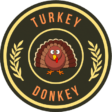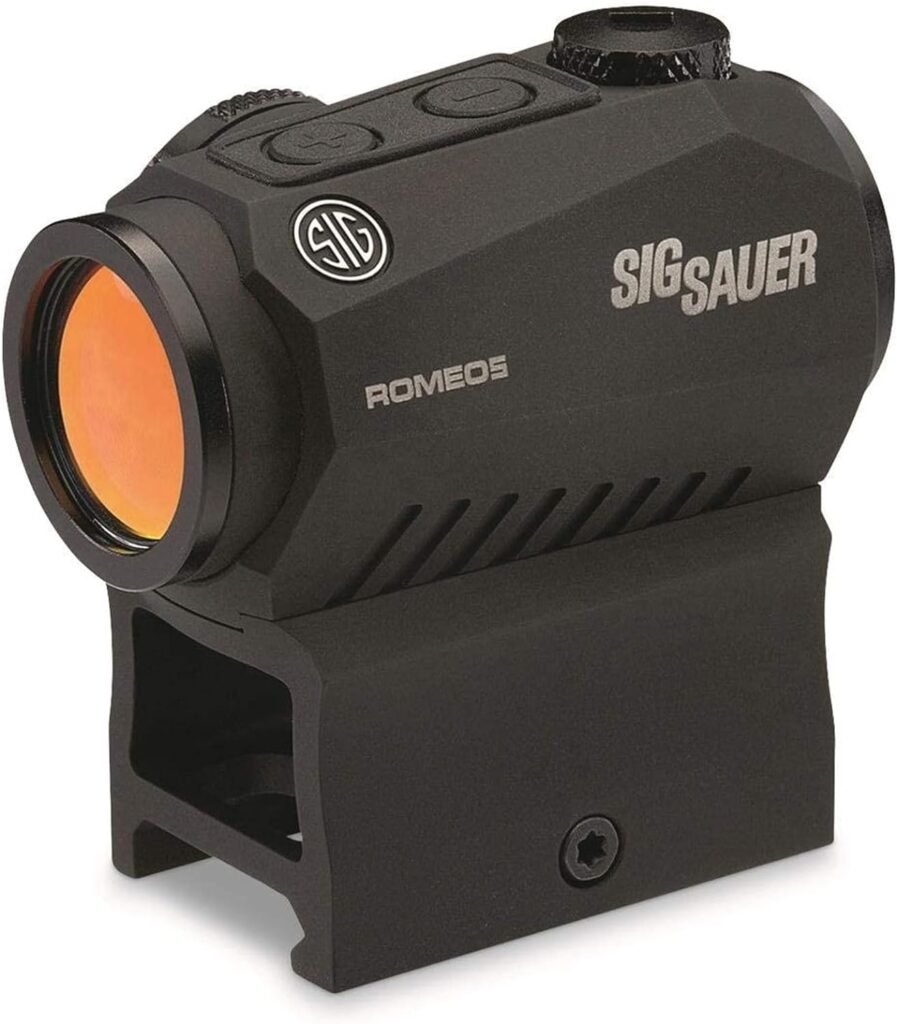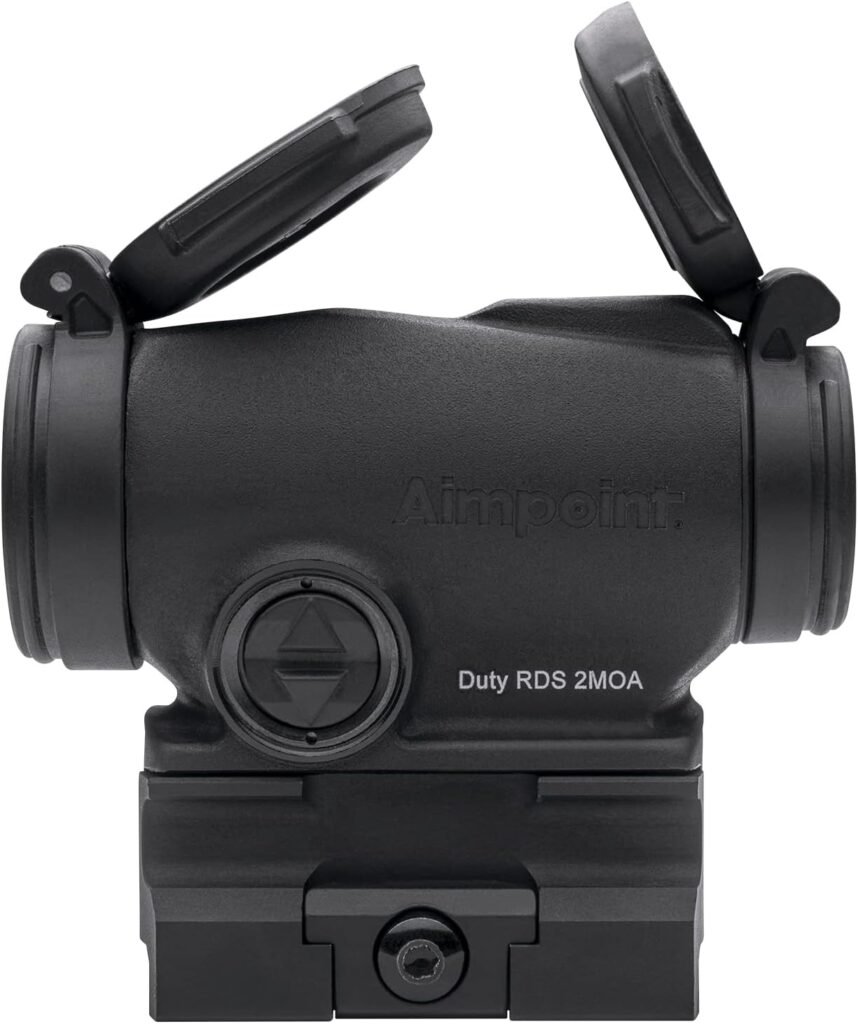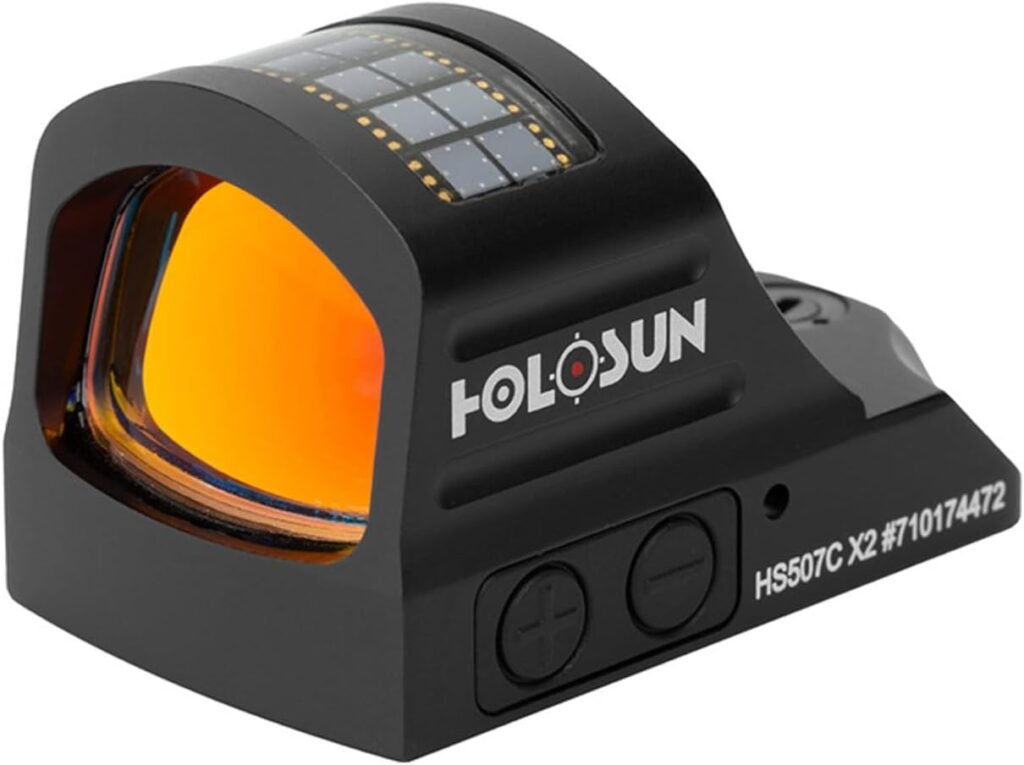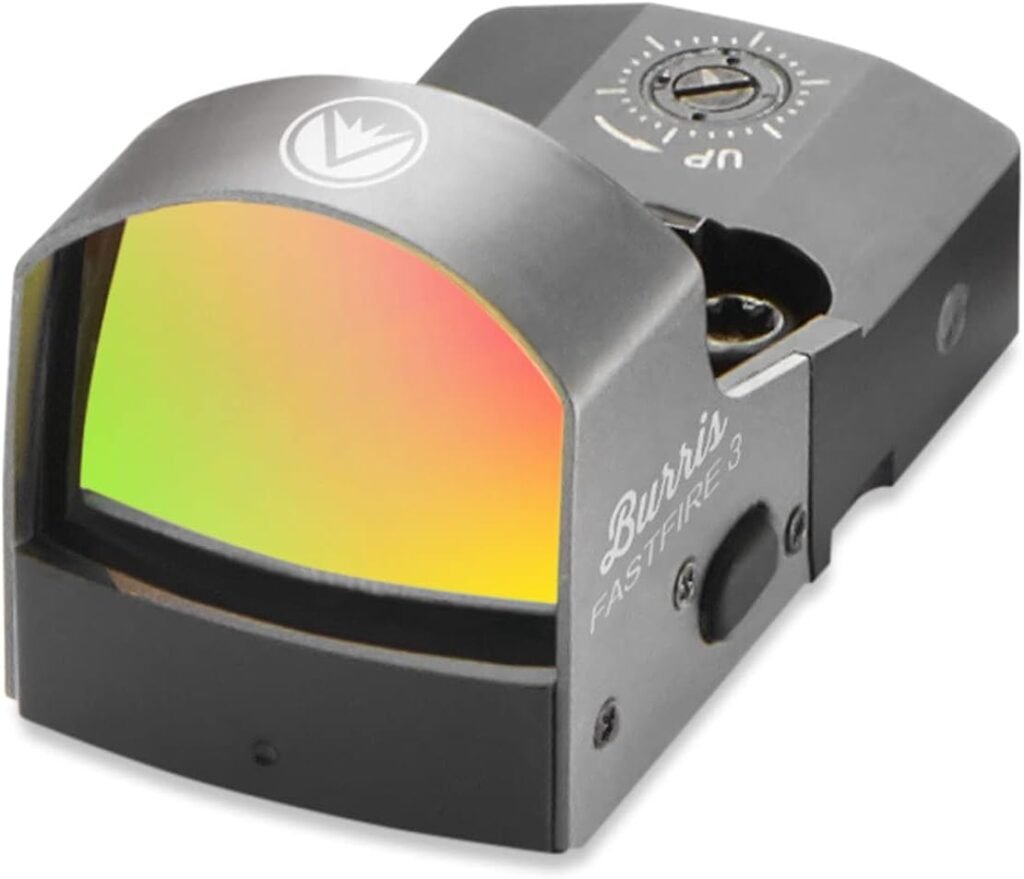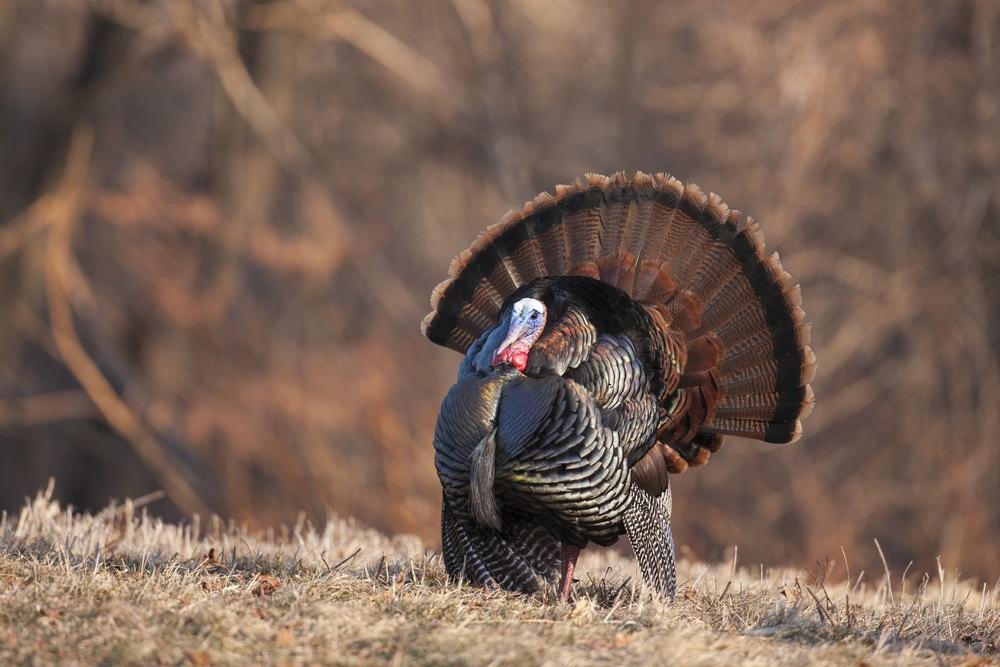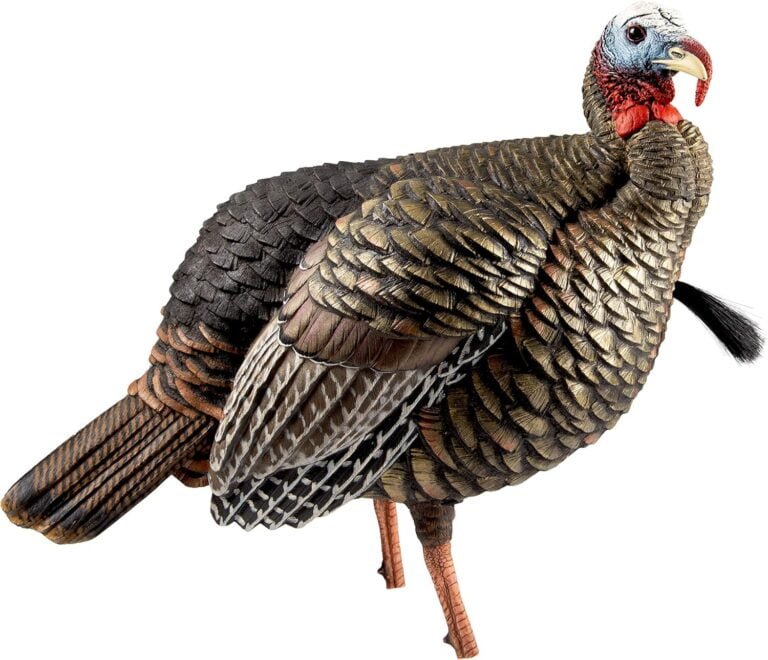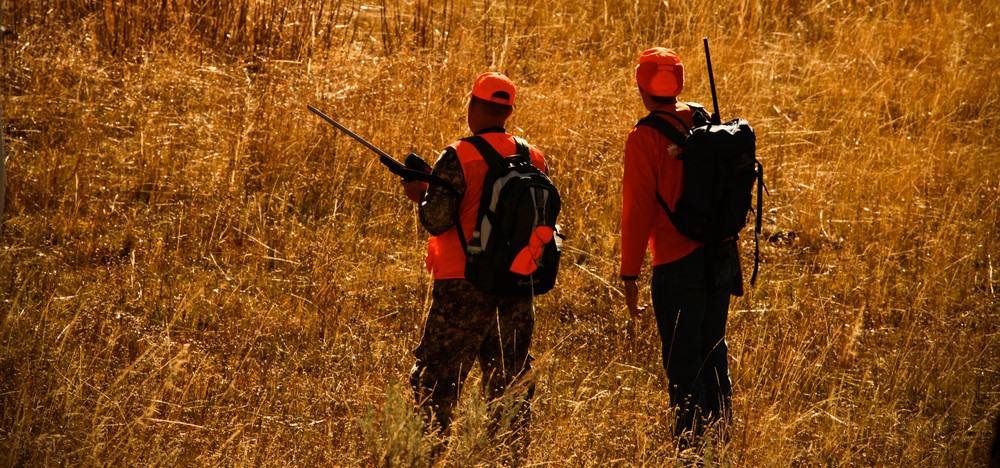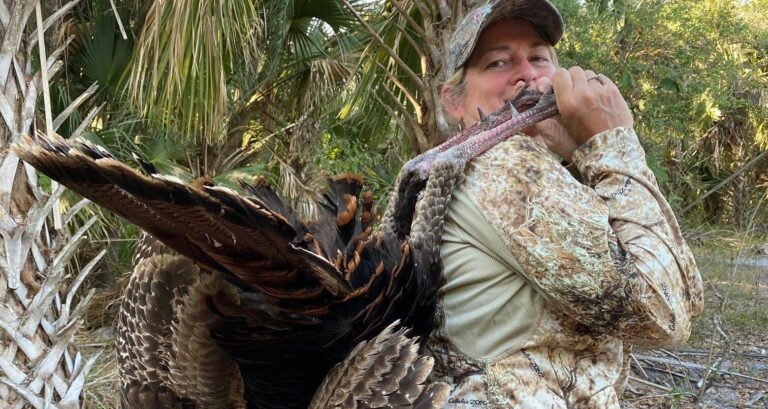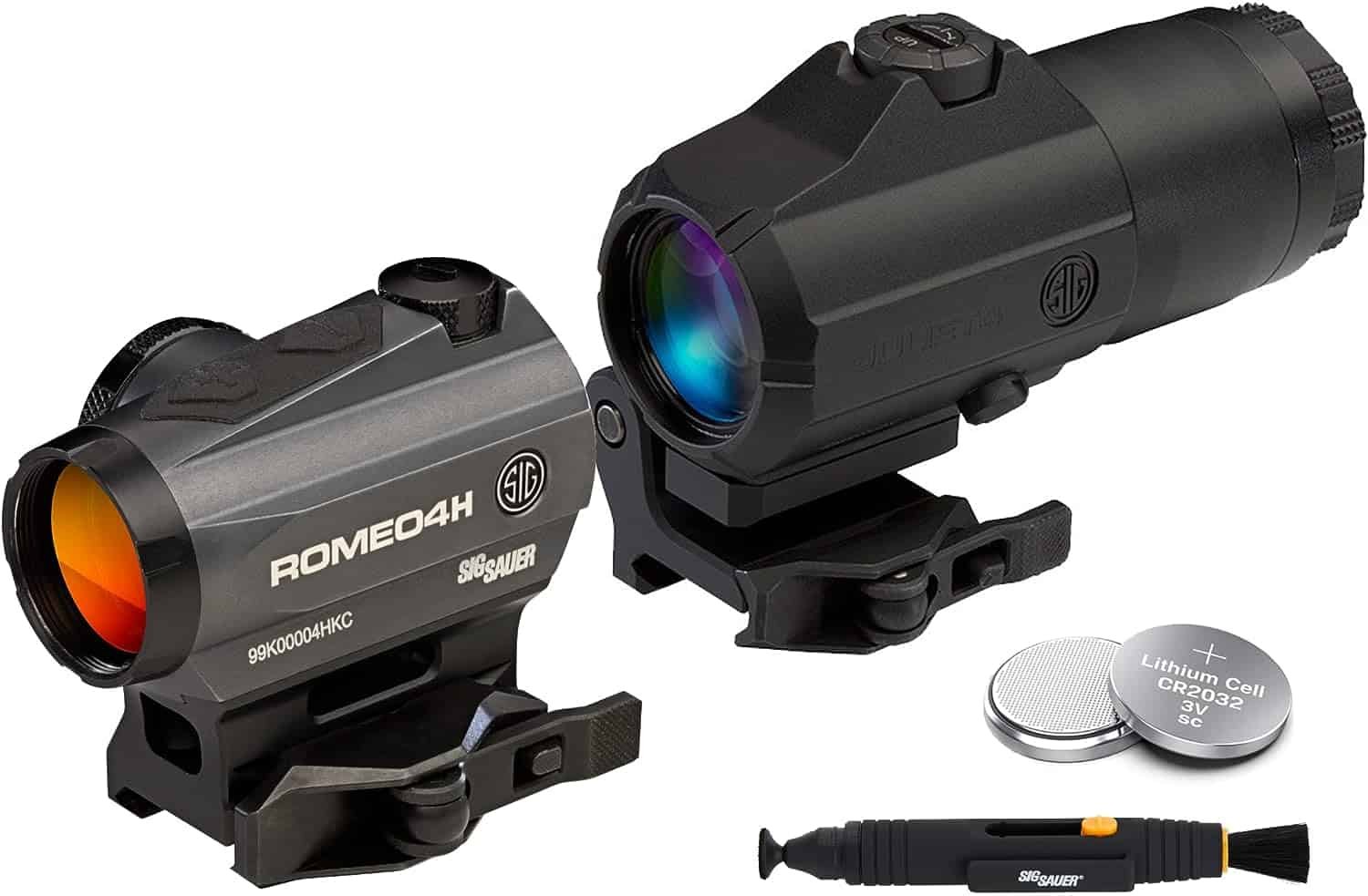Our 5 Best Red Dot for Turkey Hunting Options
The sun’s barely peeking over the horizon, painting the sky in hues of pink and orange. You’re nestled against an old oak, heart pounding as you hear the unmistakable gobble of a tom turkey. He’s getting closer, drawn in by your expert calling. Suddenly, he appears in a clearing, fanning his tail in full strut. You raise your shotgun, and in a split second, the best red dot for turkey hunting proves its worth as that crisp dot settles on his head. Game over.
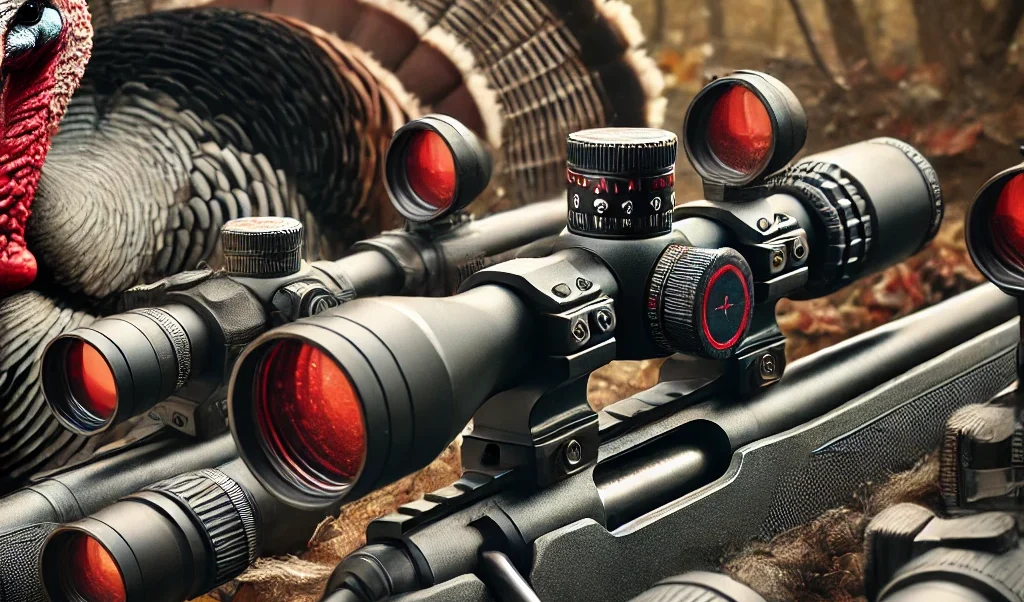
Welcome to the world of turkey hunting with red dot sights, where split-second accuracy meets the thrill of the chase.
Hey there, fellow turkey enthusiasts! I’m [Your Name], and I’ve been chasing gobblers through the woods for over two decades. In all my years of hunting, I’ve learned that while skill and patience are crucial, having the right gear can make the difference between a successful hunt and a “maybe next time” story.
You might wonder, “Do I need a red dot sight for turkey hunting?” Well, let me tell you, once you try one, you’ll wonder how you ever hunted without it. Here’s why:
Lightning-fast target acquisition: You must be ready when that tom suddenly appears. A red dot gets you on target faster than traditional iron sights or scopes.
**Shooting with both eyes open improves situational awareness and depth perception, which is crucial when that wily old bird is trying to slip away.
Simplicity: No complicated reticles or magnification to fiddle with. Just put the dot on the turkey and squeeze the trigger.
Versatility: Whether it’s the dim light of dawn or the bright midday sun, a good red dot sight performs consistently.
This post will dive deep into the world of red dot sights for turkey hunting. We’ll cover:
Why red dots are becoming the go-to choice for many turkey hunters
The key features to look for in a turkey hunting red dot
Our top 5 picks for the best sights on the market
How to choose the right red dot for your specific hunting style and shotgun
Tips and tricks for using your red dot effectively in the field
Whether you’re a seasoned pro looking to up your game or a newbie trying to get the edge for your first turkey season, you’re in the right place. By the end of this article, you’ll know exactly what to look for in a red dot sight and which ones are worth your hard-earned money.
So, grab your favorite turkey call, settle in, and let’s talk red dots. Your next trophy, Tom, is just a bright red dot away!
Introduction to Red Dot Sights for Turkey Hunters
These sights have become essential tools for turkey hunters, providing a quick and accurate way to acquire targets in the field. They use a red dot or reticle to help hunters aim and shoot with precision, making them ideal for turkey hunting.
What is a Red Dot Sight and How Does it Work?
A red dot is an optical sight that uses a red dot or reticle to help hunters aim and shoot. These sights are designed to be compact and lightweight, making them easy to mount on a turkey gun. These sights work by projecting a red dot or reticle onto a lens, which is then reflected to the hunter’s eye. This allows the hunter to quickly and accurately acquire their target, even in low-light conditions.
Why Use a Red Dot Sight for Turkey Hunting?
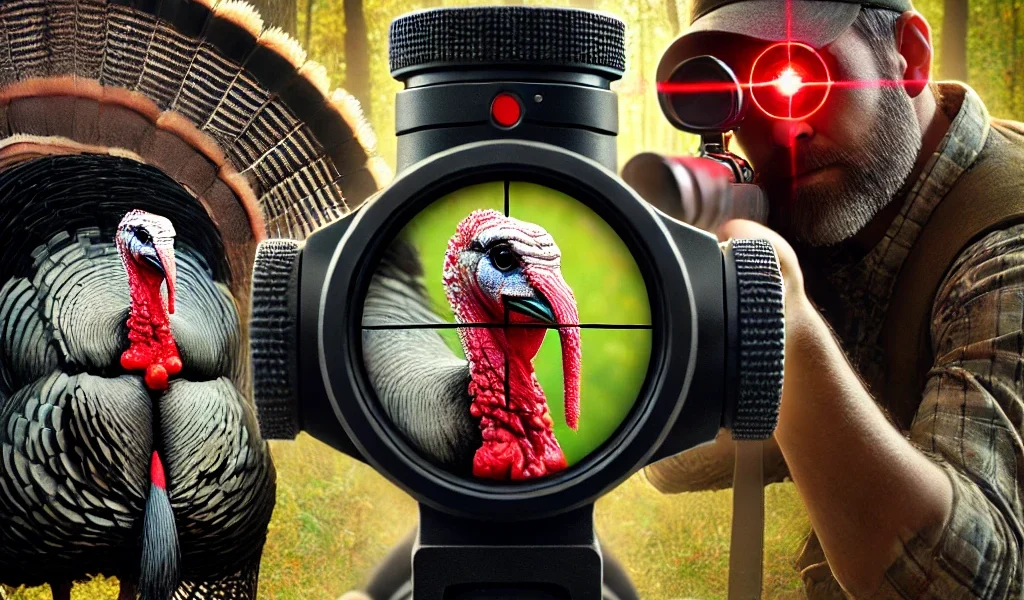
Now that we’ve set the stage, let’s dive deeper into why a red dot sight might be your new best friend in the turkey woods. Trust me, you might never return to traditional sights once you try one.
Quick Target Acquisition
In turkey hunting, split-second decisions can make or break your hunt. Here’s where red dots shine:
Instinctive Aiming: The bright dot draws your eye naturally, allowing for faster target acquisition than lining up iron sights.
No Eye Relief Issues: Red dots don’t have specific eye relief, unlike scopes. You’re good to go as long as you can see the dot.
Wide Field of View: Most red dots offer an unobstructed view of your target and surroundings, which is crucial for tracking a moving turkey.
Pro Tip: Practice mounting your shotgun and finding the dot quickly. In the heat of the moment, it should feel as natural as pointing your finger.
Both-Eyes-Open Shooting
This is a game-changer, folks. Here’s why:
Better Situational Awareness: Keeping both eyes open allows you to maintain peripheral vision. You’ll spot that sneaky tom trying to slip away.
Improved Depth Perception: This helps accurately judge distances, which is crucial for ethical and effective shots.
Reduced Eye Strain: No more squinting through one eye for extended periods. Your eyes will thank you after a long day in the field.
Remember: If you’re used to closing one eye, it might initially feel strange. Give yourself time to adjust—the benefits are worth it.
Versatility in Different Light Conditions
Turkey hunting often means being in the woods from dawn to dusk. Red dots adapt well to changing light:
Adjustable Brightness: Most quality red dots offer multiple brightness settings: dim for low light and bright for sunny days. Some models also feature auto-brightness, which adapts to changing light conditions for improved visibility during hunting.
No Magnification Issues: Red dots won’t wash out in low-light conditions, unlike magnified scopes.
Glare Reduction: Many red dots come with anti-reflective coatings, reducing glare in bright sunlight.
Insider Tip: Set your brightness to see the dot against your target. Too bright can obscure your target in low-light conditions.
Simplicity and Ease of Use
When that big tom is strutting in, you last want complicated optics. Red dots keep it simple:
No Parallax: Most red dots are parallax-free, meaning the dot stays on target regardless of your eye position.
No Magnification to Adjust: Fixed 1x magnification means one less thing to fiddle with now.
Forgiving Eye Position: You can make the shot as long as you can see the dot. This is especially helpful in awkward shooting positions.
Here’s a secret from the Turkey Woods: The simplest gear is often the most effective. A red dot lets you focus on what matters – the turkey – not your sights.
Remember, while red dots offer these advantages, they’re not magic. You still need to practice and understand your shotgun’s pattern. However, for many turkey hunters, a quality red dot sight can be the tool that takes their success to the next level.
Next, we’ll examine the key features when choosing a red dot sight for your turkey gun. But for now, think about your past hunts. How often has a turkey caught you off guard or slipped away while trying to line up your shot? A red dot might be the solution you’ve been looking for.
Key Features to Look for in a Turkey Hunting Red Dot
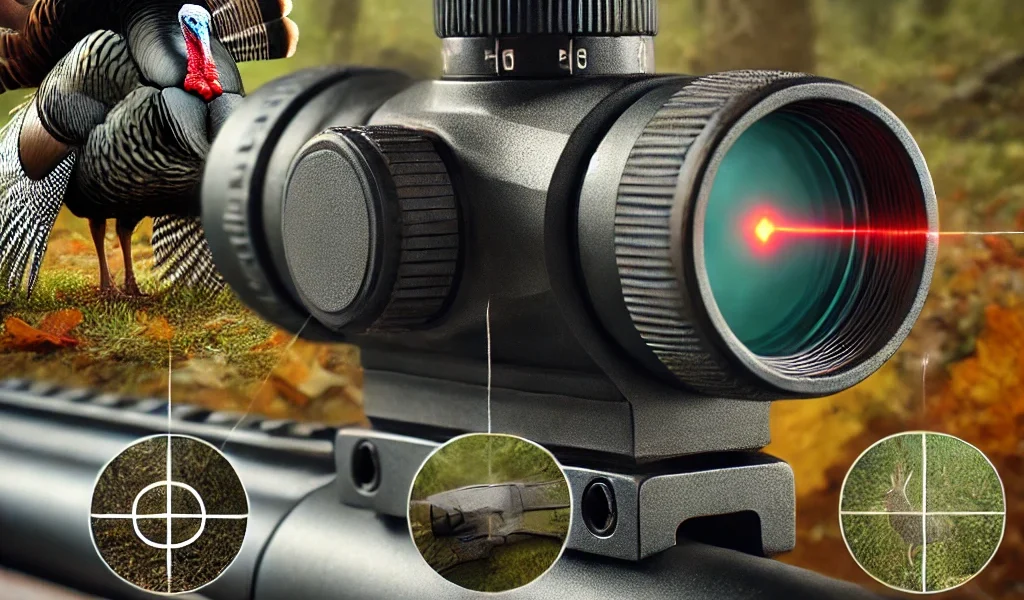
Alright, hunters. Now that we know why a red dot sight can be a game-changer let’s discuss what separates the great red dots from the so-so ones. Consider this your checklist when shopping for your next turkey hunting optic.
The right dot size and brightness can make all the difference in the field. A precise dot is crucial for accuracy, allowing for confident, ethical shots at varying distances, especially in challenging hunting environments.
Magnification and Parallax Adjustment
These sights typically do not offer magnification, as they are designed for close-range shooting. However, some models may offer parallax adjustment, which allows the hunter to adjust the sight to compensate for the distance between the sight and the target. This feature is particularly useful for hunters who must shoot at longer ranges.
Eye Relief and Eye Box
Eye relief and eye box are critical factors to consider when choosing a red dot sight for turkey hunting. Eye relief refers to the distance between the sight and the hunter’s eye, while eye box refers to the area where the hunter can see the reticle.
A good red dot sight should have a generous eye relief and eye box, allowing the hunter to quickly and easily acquire their target.
Durability and Weather Resistance
Turkey hunting can be tough on gear. Your red dot needs to be up for the challenge.
Shockproof Construction:
Look for sights rated to withstand heavy recoil.
Aluminum or similar durable materials are ideal.
Waterproof and Fogproof:
IPX6 or higher water resistance rating is recommended.
Nitrogen or argon purging prevents internal fogging.
Pro Tip: Don’t skimp on durability. A sight that fails in the field can ruin your hunt and waste your investment.
Battery Life
Nothing’s worse than your sight dying right when that big tom steps into view.
Long-lasting Battery:
Look for sights with 1000+ hours of battery life on medium settings.
Some high-end models offer five years or more of continuous use.
Auto-shutoff Features:
It helps conserve battery when not in use.
Motion-activated power-on is a bonus.
Remember: Always carry spare batteries, no matter how long the battery life is rated.
Dot Size and Brightness Settings
The right dot size and brightness can make all the difference in the field.
Dot Size:
2-3 MOA is ideal for most turkey hunting situations.
Larger dots (4-6 MOA) can work well for close-range shots.
Adjustable Brightness:
Look for multiple brightness settings (at least 6-8).
Night vision compatibility is a bonus for early-morning setups.
Insider Tip: A larger dot might be easier to see quickly in bright conditions. Practice with different sizes to see what works best for you.
Mounting Options
Your red dot needs to play nice with your turkey gun. Using a dedicated turkey gun equipped with modern sighting systems like the Leupold DeltaPoint Pro enhances accuracy and offers significant advantages in the field.
Compatibility:
Check if the sight fits your shotgun’s mounting system.
Some sights come with multiple mount heights for versatility.
Co-witness Capability:
The ability to use iron sights as a backup can be valuable.
Pro Tip: If your shotgun hasn’t been drilled and tapped for optics, consider doing it by a professional gunsmith.
Weight and Size
Remember, you’ll carry this in the field, often for long periods.
Compact Design:
Smaller sights are less likely to snag on brush.
Look for options under 5 oz if possible.
Low Profile:
Lower profile sights don’t interfere with your sight picture as much.
It can be beneficial for maintaining a natural cheek weld.
Here’s a secret from an old turkey hunter: The best sight is one you forget is there until you need it. Lightweight and compact designs help achieve this.
Additional Features to Consider
These aren’t must-haves, but they can enhance your hunting experience:
Solar Failsafe:
Some sights can run on solar power if the battery dies.
Shake Awake Technology:
Automatically turns the sight on when it detects movement.
Multiple Reticle Options:
Some sights offer different reticle shapes beyond just a dot.
Remember, the best red dot sight for you depends on your specific needs, hunting style, and budget. In the next section, we’ll look at top picks combining many of these features.
But for now, think about your hunting style. Do you run-and-gun or sit for hours in a blind? Do you hunt in rainy conditions often? Knowing your needs will help you prioritize these features and find your perfect red dot sight.
Top 5 Red Dot Sights for Turkey Hunting
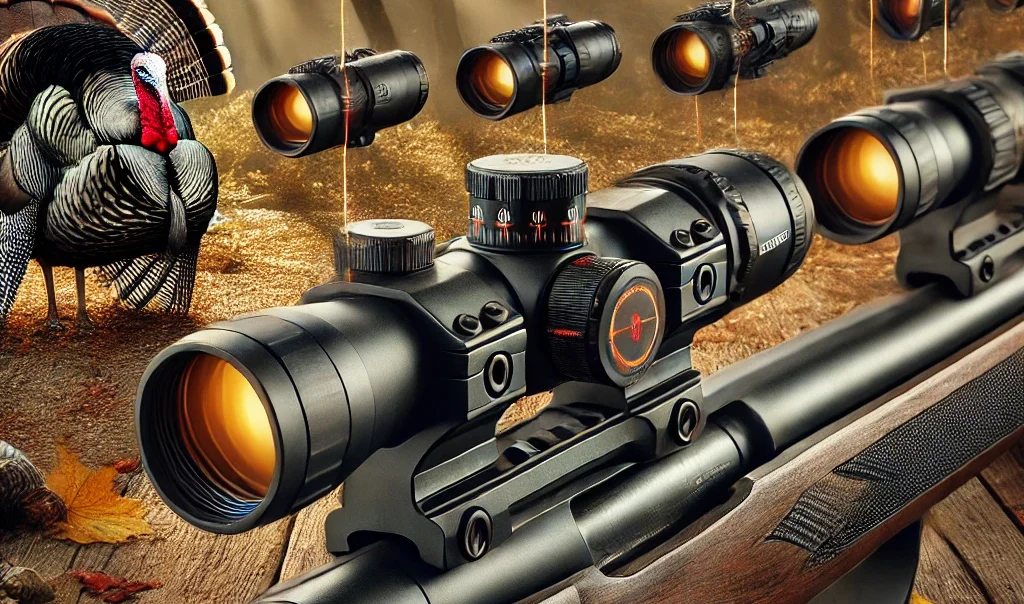
Alright, hunters, now that we know what features to look for, let’s talk about some of the best sights for bagging that big tom. Remember, the “best” sight is the one that fits your hunting style and needs. I’ve broken these into categories to help you find the right match.
Best Overall: Trijicon RMR Type 2 ($$$$)
This little powerhouse is like the Swiss Army knife of red dot sights—it has a tool for every job.
Key Features:
- Incredibly durable, aircraft-grade aluminum housing
- 3.25 MOA dot size
- Up to 4 years of battery life (medium)
- Automatic and manual brightness
Pros:
- Extremely rugged and reliable
- Compact and lightweight
- Great in various light conditions
Cons:
- On the pricier side
- More than some casual hunters need
Best Budget Option: Sig Sauer Romeo5 ($$)
Don’t let the price fool you – this sight packs a punch without breaking the bank.
Key Features:
- 2 MOA dot size
- MOTAC (Motion Activated Illumination)
- Up to 40,000 hours of battery life
- 10 illumination settings
Pros:
- Excellent value for money
- Motion-activated feature conserves battery
- Waterproof and fog proof
Cons:
- Not as rugged as some premium options
- Fewer features than high-end models
Best for Low Light Conditions: Aimpoint Micro H-2 ($$$$)
When you’re set up before dawn or staying out till last light, this is the sight you want.
Key Features:
- 2 MOA dot size
- 12 brightness settings, including four night vision compatible
- Up to 5 years of continuous use on one battery
- Fully waterproof
Pros:
- Excellent in low-light situations
- Incredibly long battery life
- Very durable and reliable
Cons:
- Higher price point
- It might be overkill for midday hunters
Most Durable: Holosun 507C X2 ($$$)
If you’re hard on your gear or hunt in rough conditions, this sight can take a beating.
Key Features:
- Multiple reticle options (2 MOA dot, 32 MOA circle, or both)
- Solar failsafe
- Up to 50,000 hours of battery life
- Shake Awake technology
Pros:
- Extremely durable, versatile reticle
- Solar backup is great for long hunts
Cons:
- Additional reticle options unnecessary
- Slightly larger than some competitors
Best Compact Option: Burris FastFire 3 ($$)
For those who want a red dot that’s barely there until you need it.
Key Features:
- 3 MOA dot size
- Automatic brightness sensor
- Low battery indicator
- Lightweight at just 0.9 oz
Pros:
- Very compact and lightweight
- Easy to use
- Good value for money
Cons:
- Not as feature-rich as some options
- Battery life isn’t as long as some competitors
Remember, the best sight for you depends on your specific needs, hunting style, and budget. Don’t be afraid to try different sights if possible – comfort and ease of use are crucial.
Pro Tip: Whatever sight you choose, practice with it before you hit the woods. Know where your gun patterns are with the sight, and be comfortable acquiring targets quickly. In the heat of the moment, you don’t want to be fumbling with unfamiliar equipment.
Next up, we’ll talk about how to choose the right red dot for your specific turkey gun and hunting style. But for now, think about which of these sights might fit your needs.
Tips for Using a Red Dot Sight While Turkey Hunting
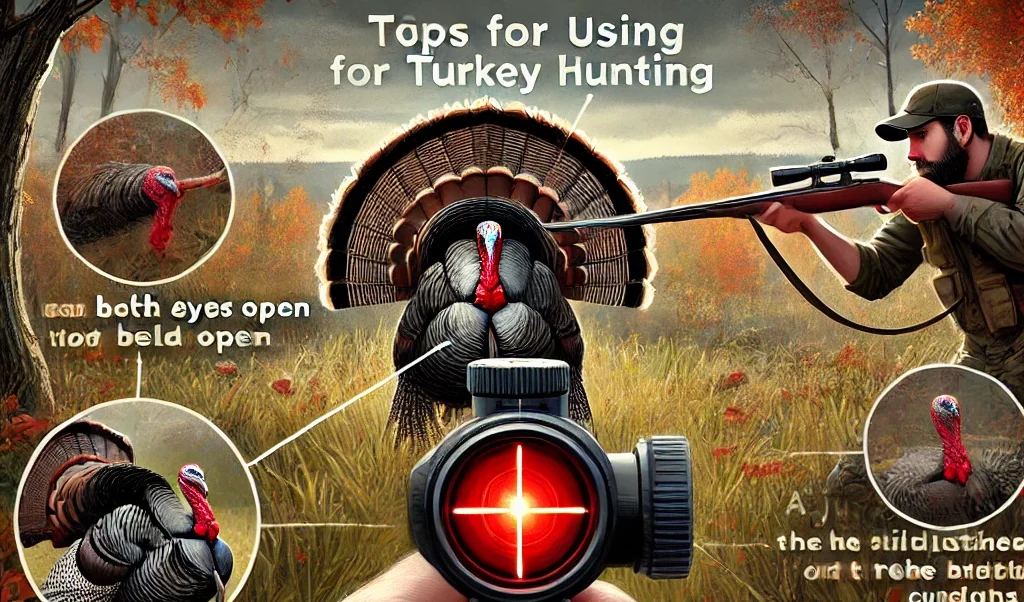
Alright, hunters, you’ve chosen your perfect red dot sight. Now, let’s talk about how to make the most of it in the field. These tips will help you become one with your new optic and increase your chances of bagging that trophy tom.
Proper Mounting and Sighting In
Getting your red dot properly set up is crucial for success.
Secure Mounting
Ensure all screws are tight, but don’t over-tighten
Use thread-locking compound for extra security
Double-check mount tightness periodically during the season
Correct Height
- Mount the sight so you have a comfortable cheek weld
Ensure you can acquire the dot quickly and naturally
Sighting In Process
- Start at close range (10-15 yards) to get on paper
- Move to 25-30 yards for fine-tuning
- Confirm your point of impact at various distances
- Aim accurately at a turkey’s head to ensure effective shots, especially in challenging environments like thick brush or low light conditions.
Pro Tip: Pattern your shotgun with the loads you’ll use for hunting. Know where your shot pattern is densest about the red dot.
Practice for Proficiency
As the old saying goes, “Perfect practice makes perfect.”
- Dry Fire Practice:
- Practice mounting your shotgun and acquiring the dot quickly
- Use snap caps to safely practice trigger control
- Range Time:
- Practice from various shooting positions (standing, kneeling, seated)
- Set up realistic hunting scenarios
- Practice in low light conditions if you’ll be hunting early mornings
- Moving Targets:
- Have a friend pull a turkey target on a string
- Use clay pigeons to practice leading moving targets
Insider Tip: Try the “Rolled Coin Drill.” Balance a coin on your barrel and practice mounting the gun without letting it fall. This builds smooth, consistent gun mount skills.
Battery Management
Don’t let a dead battery ruin your hunt.
- Regular Checks:
- Check your battery before each hunting trip
- Replace the battery at the start of each season, regardless of charge
- Carry Spares:
- Always have at least one spare battery in your vest
- Know how to change the battery quickly in the field
- Brightness Settings:
- Use the minimum brightness needed for clear visibility
- Lower brightness settings conserve battery life
Remember: Many sights have auto-shutoff features. Familiarize yourself with how yours works to avoid unexpected shutoffs.
Maintenance and Care in the Field
A little TLC goes a long way in keeping your sight reliable.
- Lens Care:
- Use a lens pen or microfiber cloth to clean lenses
- Avoid touching the lens with your fingers
- Use lens caps when not actively hunting
- Weather Protection:
- In heavy rain, use a scope cover or even a small plastic bag
- After exposure to moisture, dry your sight thoroughly
- Regular Checks:
- Periodically check your sight’s zero, especially after rough handling
- Inspect mounting screws for tightness before each hunt
Pro Tip: Keep a small allen wrench or sight adjustment tool in your vest for quick fixes in the field.
Adapting to Different Hunting Scenarios
Flexibility is key in turkey hunting.
- Low Light Conditions:
- Practice adjusting brightness settings without looking
- Consider using a larger MOA dot for faster acquisition in dim light
- Dealing with Glare:
- Use a sight hood or shield in bright conditions
- Position yourself to avoid direct sunlight on the lens when possible
- Shot Angle Considerations:
- Remember that your point of impact may change at steep up or down angles
- Practice shooting from elevated positions if you use blinds
Here’s a secret from an old turkey hunter: The best shooters are the ones who can adapt. Your red dot is a tool, but your brain is the real weapon. Stay flexible, and let your instincts work with your optic.
Remember, using a red dot effectively is about building muscle memory and instinct. The more you practice, the more natural it will feel. When that big tom steps into view, you want to be focused on the bird, not fumbling with your gear.
In our final section, we’ll address some frequently asked questions about using red dot sights for turkey hunting. But for now, get out there and practice! The spring season will be here before you know it.
Frequently Asked Questions
As we wrap up our comprehensive guide on red dot sights for turkey hunting, let’s address some common questions that might still be on your mind.
Are red dots better than scopes for turkey hunting?
Red dots and scopes each have advantages, but red dots often edge out traditional scopes for most turkey hunting scenarios. Here’s why:
- Faster target acquisition: Red dots allow for quicker shots, which is crucial when a tom suddenly appears.
- Both-eyes-open shooting: This gives you better situational awareness in the woods.
- Simpler to use: No magnification or eye relief to worry about.
- Lightweight: Generally lighter than scopes, which is nice for run-and-gun hunting.
However, a low-power scope might be preferable if you frequently take long shots (beyond 50 yards). Always prioritize ethical, clean kills within your effective range.
How long do batteries typically last in a red dot sight?
Battery life varies widely between models, but here’s a general guide:
- Budget models: 1,000 to 5,000 hours
- Mid-range models: 10,000 to 50,000 hours
- High-end models: Some offer 100,000+ hours or even several years of continuous use
Remember, these are often based on medium brightness settings. Using maximum brightness will drain the battery faster.
Pro Tip: Regardless of rated battery life, always carry a spare and replace your battery at the start of each season.
Can I use a red dot sight in rainy conditions?
Yes, most quality red dot sights are designed to handle rainy conditions. Look for sights with these features:
- IPX6 or higher water resistance rating
- Fully sealed construction
- Nitrogen or argon is purged to prevent internal fogging
Even with a waterproof sight, it’s a good idea to use a scope cover in heavy rain and thoroughly dry your sight after exposure to moisture.
Do I need to re-zero my red dot sight often?
When properly mounted, a quality red dot sight should hold zero reliably. However, it’s good practice to check your zero:
- At the start of each season
- After any heavy recoil or impact to the sight
- If you change ammunition or chokes
Most hunters rarely need to adjust their zero once it’s properly set.
Can I use a red dot sight for hunting other than turkeys?
Absolutely! Red dot sights are versatile and can be used for various hunting scenarios:
- Deer hunting, especially in thick brush or for short-range shots
- Hog hunting, where quick target acquisition is crucial
- Small game hunting
- Even some waterfowl hunting setups
The key is matching the sight to your specific hunting needs and conditions.
Will a red dot sight work with my glasses?
Red dot sights work well with glasses, including bifocals and trifocals. They’re often easier to use with glasses than traditional iron sights because:
- No need to focus on multiple planes (front sight, rear sight, and target)
- The dot appears to float on the same plane as your target
- Most red dots have unlimited eye relief
Just ensure your sight is mounted at a height that allows a comfortable cheek weld with your glasses on.
Remember, these are general answers. For the most accurate information about your model, refer to your specific site’s manual.
As we close out this guide, I hope you feel more confident about choosing and using a red dot sight for your turkey hunting adventures. Remember, the best gear is the gear that becomes an extension of yourself in the field. Practice with your new sight, stay safe, and enjoy the thrill of the hunt!
Happy hunting, and may your seasons be filled with gobbles and great memories!
